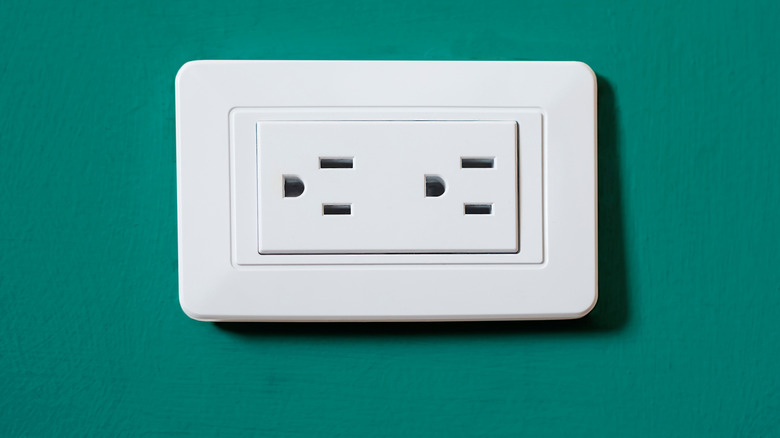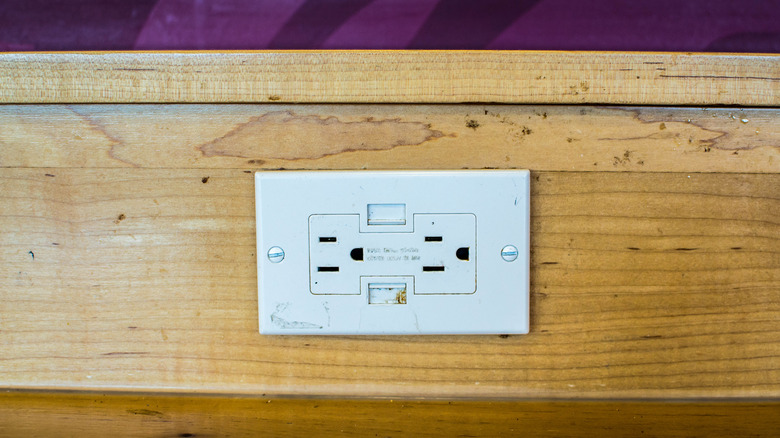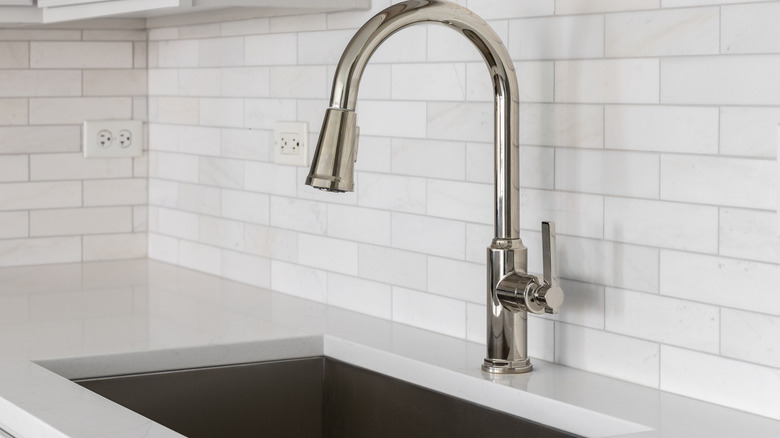Why Are Some Electrical Outlets Installed Sideways?
Most electrical outlets are installed vertically, with one receptacle oriented above the other. But if you take a close look around your house, you'll probably find at least a couple mounted horizontally, with the receptacles side by side. This orientation is often found in kitchens or near bathroom fixtures, but is there a particular reason that some outlets are installed sideways?
The National Electrical Code doesn't require electrical outlets to be mounted in a certain way, so how outlets are positioned and oriented will depend on the size and layout of each room and the planned use for the outlet. In many households, you will also see some outlets installed upside-down based on similar considerations. While it's often a matter of function, sometimes orientation is all about how an outlet looks and fits with the design and use of that particular area. There's no universal guideline here, but a horizontal outlet will sure stand out.
The practicality of horizontal electrical outlets
Let's say you have a kitchen countertop with barely any clearance between the top of the backsplash and the bottom of the cabinets. In that case, a vertical outlet might not fit or get blocked by tall countertop or unconventional kitchen appliances. Turning the outlet sideways can help it fit it in a tight space, even if only one receptacle can be accessed. In these cases, a horizontal placement won't work if you're trying to plug in your coffee machine and toaster at the same time.
You might also see horizontal outlets in spots where space is tight like behind a fridge or near a mounted TV, furniture, or table legs. In many cases, it will be the only setup that works if you want to be able get to a receptacle easily. So, horizontal orientation is sometimes about making an outlet adapt to the space rather than changing the room to work around the outlet.
Horizontal outlets can be a design choice
A horizontally-placed outlet can also be implemented as part of a design scheme. For instance, some kitchens have what are known as 'subway tiles,' which are much wider than they are tall. A vertical outlet in the middle of these tiles would definitely feel a bit off, so many electricians flip the outlet sideways; either on their own initiative or because that's what the customer requested.
Exterior outlets can be oriented horizontally for similar reasons. Many builders do this to help outlets blend in with siding lines or brick patterns. In some cases, horizontally-mounted outlets can also be better protected from the elements. Some outlet covers are hinged on the long side, so they can be installed so as to open upward when mounted horizontally. This may offer some more protection than if that same cover and outlet were installed vertically. But whether for form or function, the orientation of indoor and outdoor electrical outlets is usually determined on a case-by-case basis by property owners, designers, and contractors.


